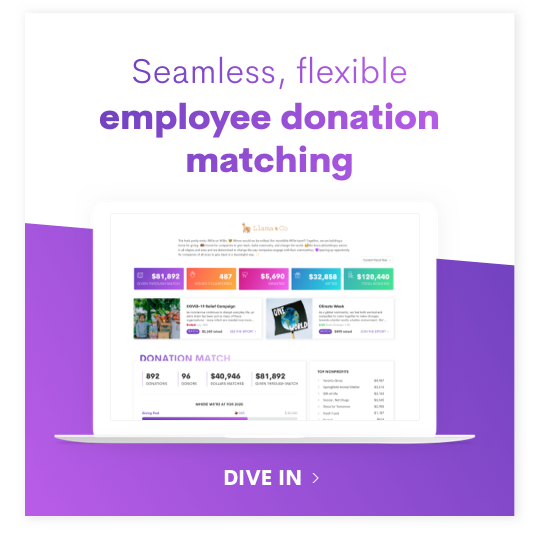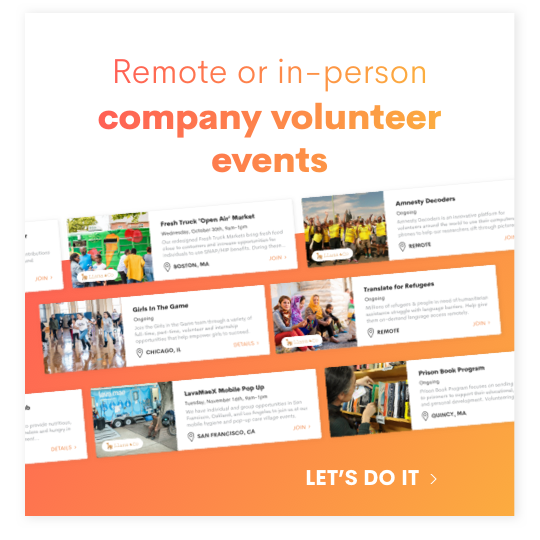In cultivating a sense of belonging at work, it’s not enough to pay it lip service. You have to take action. But what does that look like in practice? “Company culture” can sound vague if you don’t have the tools necessary to build a more inclusive workplace.
To help facilitate building that inclusive workplace, some organizations turn to an ERG: an employee resource group. But what’s an ERG, and how does it foster an open and welcoming environment for people of any ethnicity or underrepresented background? Let’s dive more deeply into what an ERG can accomplish—and what sort of impact that can have on your employee retention.
What Does “Employee Resource Group” Mean?
An employee resource group or ERG refers to an assembly of people to foster better justice, equity, diversity, and inclusion (JEDI) in the workplace. The ERG members typically consist of volunteers from within the organization. The goal of an employee resource group is to help ensure that an organization can provide the safe space necessary for people of all groups to feel comfortable at work.
An ERG can then provide support in whichever way they see fit. For example, they can create “affinity groups” within an organization to help promote a sense of belonging. They can assist in the professional development of new hires. They can begin mentoring programs that help people connect in new ways. ERG leaders looking to generate employee engagement can consult with Human Resources to identify key ways to bring awareness to everyone within the organization.
The concept of ERGs began at Xerox in the 1960s when black employees volunteered together to help ease racial tension within the workplace. These days, ERGs can provide advocacy for all minority groups and underrepresented voices, giving employees a sense of allyship within the organization they’re working with.
Why are Employee Resource Groups Important?
For starters, any new employees beginning the onboarding process will need to know that they can feel safe and comfortable in their new workplace. An ERG can help facilitate that. Inclusion efforts like ERG also help establish that the organization is committed to hearing people of all voices and backgrounds within its leadership.
Fostering an inclusive environment will always be vital. In some research, as many as 90% of companies with ERGs in action were able to do a better job of onboarding new employees in a way that made those employees feel comfortable. According to similar research, the first 60 to 90 days of any employee’s life at a new organization is vital. Using an ERG and similar support groups helps send the message to these employees that they are valued.
But it goes beyond the onboarding process. Employees of all backgrounds—race, religion, status, sexual orientation, and more—need to know that inclusion efforts are part of an organization’s long-term commitment to building a welcoming environment. That not only provides the short-term benefits of an ERG and its mentorship programs, but it demonstrates that a company isn’t just talking about inclusivity. It’s making it a priority.
Are ERGs important? Of course. But they’re not just important for their stated purpose, which is more than essential. They’re also crucial in reminding everyone of their commitment to foster an organization fully committed to inclusivity in the workplace.
Are ERGs Effective?
Given the benefits of ERGs, it’s tempting to wonder if these leadership opportunities have a demonstrable impact on the workplace. In short, do they work?
There is significant research suggesting that they do have an impact. When Bank of America, for example, invested in ERGs for women, the effectiveness was immediate and measurable. They established several networks to help women get the resources they needed through work, including training, mentoring, and networking assistance to help women seek the leadership roles they deserved. Other teams aimed beyond the company, launching initiatives that helped women with other aspects of their lives beyond work, including training sessions to educate employees on the problems of domestic violence.
But there’s more to measuring how ERGs can be effective than how many support groups and training sessions they can launch. Consider the following:
- Physical changes at work. An ERG can launch initiatives within the workplace to change the physical environment to be more inclusive. For example, an ERG that works to promote visual and physical accessibility around the office can immediately affect how inclusive the business becomes.
- Identifying leadership opportunities. As ERGs reach out to people interested in leadership opportunities, it gives leadership an opportunity to identify candidates who are putting their names forward. These connections and the enhanced networking help establish bonds that otherwise wouldn’t have been formed through traditional channels.
- Launching new company-wide initiatives. Sometimes, an initiative can be all that’s required to raise awareness about specific issues at work. An ERG’s presence can be the catalyst behind these initiatives. As the ERG proposes changes, a company can spring into action and adapt its strategies to suit a more inclusive atmosphere.
- Social media outreach. With an ERG’s social media presence, the group can initiate a more significant amount of outreach than if it had simply met at work. This improves opportunities for going beyond the organization for ideas, networking opportunities, and the possibilities of learning from other organizations.
Employee resource groups might sound like a relatively tame phrase for the essential catalyst for change they represent within an organization. But with an employee resource group in place, your company can undergo sweeping transformations that help boost employee engagement, improve the comfort of every team member, and inspire leadership to connect with their employees. The result? Less emphasis on words and more emphasis on action. And it’s action that ultimately defines the success of any organization.



